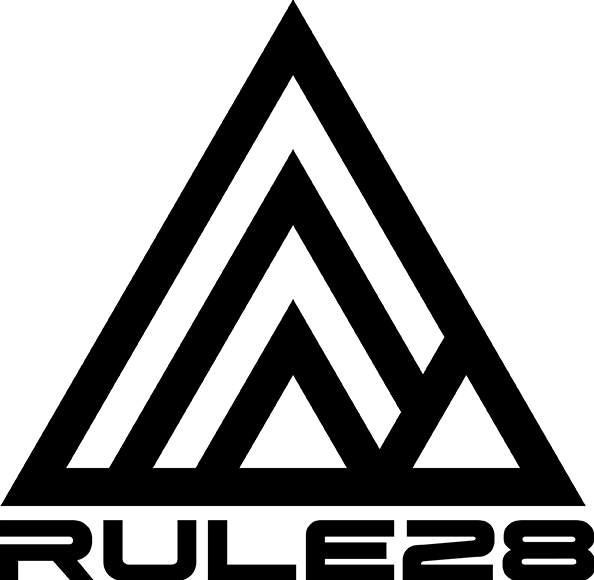The Neo Suit - A New Era of Aero

Cycling Aerodynamics
The aerodynamics of cycling clothing is all about reducing the drag generated by the rider.
The human body isn’t designed with aerodynamics in mind. Adaptions can be made through changes to riding position, but this still leaves us with a shape that has a high coefficient of drag (CD).
Aero clothing attempts to reduce the CDA (coefficient of drag x frontal area) through several different processes.
- The first and most simple is to reduce loose or wrinkled fabrics that may add extra drag.
- Secondly, on areas of the body such as the back, where the boundary layer of air remains attached, we use fabrics with the lowest skin friction possible.
- Finally, and most significantly, on areas such as the arms where their shape generates high levels of pressure drag. (This is when air is compressed on the front of the arm and as it flows around the arm, the boundary layer detaches, generating an area of low pressure behind the arm.) The high-pressure and low-pressure areas work in tandem to effectively push and pull the arm backwards. Where pressure drag is an issue, surface roughness is applied with fabrics to energise the boundary layer before it separates, causing the flow to turn turbulent and move the separation point for the boundary layer further downstream, reducing the low-pressure area behind the arm and lowering overall drag.
 A representation of airflow around an arm or leg showing how drag is generated.
A representation of airflow around an arm or leg showing how drag is generated.
Typically, fabric hairiness is something avoided in aerodynamics clothing as it results in extra skin friction drag without yielding reductions in drag. Examples of hairy fabrics would be brushed fleece, wool, felt etc.
 A representation of fabric hairiness in section view
A representation of fabric hairiness in section view
Roughness in microstructure is commonplace in cycling and created by modifications to the knitting or warping of the fabric. Ribbed or dimpled fabrics have been used very successfully to trigger turbulent flow. Surface roughness does come with higher levels of skin friction.
 A representation of fabric microstructure in section view
A representation of fabric microstructure in section view

The Neo TT Suit
We began researching this concept in late 2019 as our first-generation suit was nearing completion. Our starting point was research conducted by Camilla Fydrych Sæter at NTNU1 into how macrostructure roughness, in the form of strips running lengthways down an athlete’s limbs, when placed under a smooth surface layer, could lead to significant reductions in Reynolds number and a consequent drop in CD
Sæter’s study was focused on a creating a suit for running, with slower target speed than cycling. She also used processes that would be illegal under UCI rules, but her finding did show significant performance gains as well as showing the most effective strip size was a width and height of 1mm x 1mm, meaning that a fabric of this structure would comply with UCI clothing regulations2
Following on from the test results obtained by Sæter on what strip spacings were most effective for her target speed, we extrapolated what spacings would yield the greatest drag reduction for TT speeds. We then produced this fabric, along with a one with a narrower spacing and one with a wider spacing to test in the wind tunnel.
These fabrics were added the the arms of a cropped base layer to support them. These base layers were then paired with our new prototype suit. Tests were conducted in the wind tunnel at Silverstone Sports Engineering Hub. Our 2021 skinsuit was used as a baseline to compare performance.

Test Setup

Speeds from 35-60kph in 5kph increments were selected for the test to give an view across the majority of speeds that can be expected in TT races. Yaw angles of 0° and 5° were selected for testing - also those typical of most TT races except on heavy cross wind days.
The test rider is an elite cyclists who was able to keep consistent position and cadence between all test runs. All equipment besides the items being tested were kept constant.
Our 2021 TT Skinsuit was our baseline suit used to compare the performance of our 2022 Neo Suit and Aero Baselayers. This suit was chosen as our benchmark as through prior testing we have already established the suits performance as one to the fastest suits on the market.
The Neo Suit was tested with all three base layers and then again by itself to understand the change in performance yielded by the base-layers.
Test Data
| YAW 0 | ||||||
| Suit Name (Power) | 35kph | 40kph | 45kph | 50kph | 55kph | 60kph |
| R28 2021 TT (W) | 133.3 | 194.7 | 272.3 | 371.6 | 494.4 | 637.4 |
| Narrow (W) | 130.9 | 193.6 | 272.6 | 368.7 | 483.6 | 622.7 |
| Mid (W) | 129.7 | 190.6 | 269.5 | 365 | 487.4 | 617.1 |
| Wide (W) | 131 | 192.6 | 269.2 | 368.2 | 487.1 | 630.2 |
| No Base layer (W) | 134 | 197.5 | 278.4 | 376.2 | 495.2 | 629.5 |
| YAW 5 | ||||||
| Suit Name (Power) | 35kph | 40kph | 45kph | 50kph | 55kph | 60kph |
| R28 2021 TT (W) | 136.1 | 197.2 | 275.4 | 369.4 | 490.3 | 629.7 |
| Narrow (W) | 134.7 | 194.7 | 271.4 | 366.9 | 480.8 | 618.8 |
| Mid (W) | 133.7 | 193.6 | 267.9 | 362.4 | 473.5 | 607.6 |
| Wide (W) | 134.3 | 196.5 | 276.4 | 365.9 | 485.9 | 626.9 |

Results
The results from testing show a clear benefit in drag reduction using the aero base layers when compared to our 2021 TT Suit and the Neo Suit by itself. At 0-degree yaw, the only test that resulted in a worse result when using an aero base layer was the wide strip fabric at 60kph when compared to the Neo Suit by itself. However, even this result is within the margin of error for testing (0.7W)
At 0-degrees of yaw, across the range of speeds tested, the middle width fabric resulted in the largest saving in drag. The middle width fabric also yielded the greatest saving at a whopping 17.4W saving when paired with the Neo Suit Vs. our 2021 TT Skinsuit and 12.4W saving when compared to the Neo TT Suit without it.
The performance of the middle width fabric only increased in the 5-degree yaw testing, leading in savings at every speed and extending its lead as speed increased. At 60kph, when paired with the Neo TT Suit and compared to our 2021 TT Skinsuit, the middle width fabric base layer yielded a power saving of 22.1W.

Links
2: ARTICLE 1.3.033 https://assets.ctfassets.net/761l7gh5x5an/7s1ma6mVAVlFwi8rRgy0Iw/1bef531dd9e9f534c34ff016c68e3c72/Clarification_Guide_of_the_UCI_Technical_Regulation_-_20211005_-_ENG.pdf

